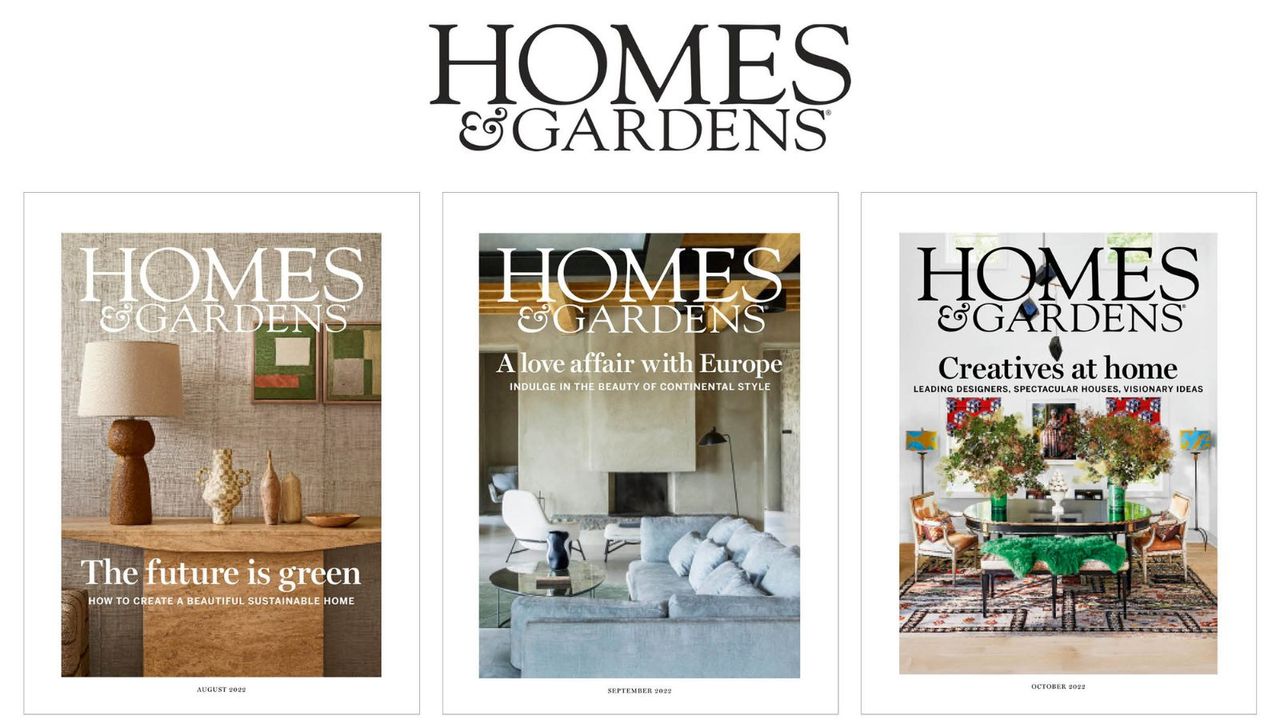The Ultimate Guide to Homes & Gardens Magazine: History, Impact, and Subscription Options
Are you looking to elevate your home decor knowledge and stay on top of the latest design trends? Homes & Gardens magazine has been a cornerstone publication in the US home design and landscaping market for over a century. With its rich history and authoritative voice, this publication continues to influence how Americans conceptualize and create their living spaces.
In this comprehensive guide, you’ll discover everything you need to know about Homes & Gardens magazine—from its historical significance to current subscription options. Whether you’re a long-time reader or considering your first subscription, this article will help you understand why this publication remains relevant in today’s digital age.
A Storied History: The Evolution of Homes & Gardens Magazine
The Founding and Early Years
Homes & Gardens magazine was first published in 1919, making it one of America’s oldest continuously published home and lifestyle magazines. When it was launched, the United States was experiencing significant social and economic changes following World War I. The magazine was created to help homeowners navigate these changes while creating beautiful, functional living spaces.
In its early years, Homes & Gardens focused primarily on architectural styles and formal gardens. The magazine quickly established itself as an authority on traditional American home design. During this period, articles often featured grand estates and elaborate garden plans that reflected the aspirations of middle and upper-class Americans.
According to the Library of Congress’s American periodicals collection, Homes & Gardens was among the first mainstream publications to consistently feature color photography of interiors, which revolutionized how Americans visualized home design possibilities. You can explore more about historic American publications through the Library of Congress National Digital Newspaper Program.
The Mid-Century Transformation
By the 1950s and 1960s, Homes & Gardens had evolved to reflect the changing American lifestyle. The post-war housing boom created millions of new homeowners, and the magazine adapted its content to address their needs and interests.
During this period, the publication began featuring more affordable housing options, practical DIY projects, and simplified gardening techniques. This shift made the content more accessible to the growing middle class and helped cement the magazine’s position as a trusted advisor for the average American homeowner.

The following table highlights key milestones in the evolution of Homes & Gardens magazine:
| Decade | Key Developments | Cultural Context |
|---|---|---|
| 1919-1930s | Launch and establishment as a luxury home publication | Post-WWI prosperity and the Roaring Twenties |
| 1940s | Focus on practical home solutions | WWII resource constraints and post-war planning |
| 1950s-1960s | Expanded coverage of suburban homes and modern design | Post-war housing boom and rise of suburbia |
| 1970s-1980s | Introduction of environmental and energy-efficient themes | Energy crisis and environmental awareness |
| 1990s-2000s | Integration of technology and smart home features | Digital revolution and internet adoption |
| 2010s-Present | Multi-platform approach with digital and print offerings | Social media influence and sustainability focus |
Contemporary Relevance
Today, Homes & Gardens has successfully navigated the digital transition while maintaining its print heritage. The publication has expanded its reach through a robust online presence, social media channels, and digital editions.
The magazine continues to feature stunning photography and expert advice, but now covers a wider range of styles and price points than ever before. This inclusive approach has helped the publication remain relevant to contemporary readers who represent diverse tastes, budgets, and living situations.
Content and Editorial Focus: What Sets Homes & Gardens Apart
Editorial Approach and Signature Sections
What makes Homes & Gardens stand out in the crowded home and design magazine market is its distinctive blend of aspirational and attainable content. The publication strikes a careful balance between showcasing dream homes and providing practical advice that readers can implement regardless of budget.
Regular sections you’ll find in most issues include:
- Home Tours: Detailed walkthroughs of exceptional homes ranging from historic renovations to contemporary new builds
- Garden Planning: Seasonal guides for landscape design, plant selection, and garden maintenance
- Design Solutions: Expert advice for tackling common design challenges in various rooms
- Trend Reports: Analysis of emerging styles, colors, and materials in interior design
- Expert Interviews: Conversations with renowned designers, architects, and gardening professionals
- Product Reviews: Unbiased assessments of home goods, furniture, and gardening equipment
According to a 2023 report by the U.S. Bureau of Economic Analysis, Americans spend approximately $985 billion annually on home improvement and decoration. Publications like Homes & Gardens play a significant role in influencing these consumer decisions.
Special Issues and Annual Features
Beyond its regular monthly editions, Homes & Gardens publishes several special issues throughout the year that have become highly anticipated by loyal readers:
- Design Awards (Spring): Highlighting the year’s most innovative products and designs
- Garden Special (April/May): An expanded guide to gardening projects and outdoor living
- Holiday Decorating (November/December): Inspiration for seasonal décor and entertaining
- Kitchen & Bath Edition (September): Focused content on the most frequently renovated spaces
These special editions typically feature increased page counts and often become collector’s items for design enthusiasts.
The Business Model: How Homes & Gardens Thrives in the US Market
Circulation and Readership Demographics
Despite challenges facing print publications, Homes & Gardens maintains a strong circulation in the United States market. The magazine has successfully retained a loyal readership while attracting new subscribers through its expanded digital offerings.
The following table provides an overview of Homes & Gardens’ readership demographics compared to the overall home and design magazine category:
| Demographic Factor | Homes & Gardens Readers | Industry Average | Difference |
|---|---|---|---|
| Median Age | 45-54 years | 40-49 years | +5 years |
| Female Readership | 78% | 72% | +6% |
| Male Readership | 22% | 28% | -6% |
| Median Household Income | $125,000 | $98,000 | +$27,000 |
| College Educated | 82% | 68% | +14% |
| Homeownership Rate | 89% | 75% | +14% |
| Urban/Suburban Residents | 76% | 81% | -5% |
| Rural Residents | 24% | 19% | +5% |
This demographic profile indicates that Homes & Gardens readers tend to be slightly older, more affluent, and more highly educated than the average home magazine reader. They’re also more likely to own their homes and to live in rural areas, which aligns with the publication’s emphasis on both house and garden content.
According to research from the Federal Reserve’s Survey of Consumer Finances, homeowners with characteristics matching Homes & Gardens’ core demographic spend approximately 40% more on home improvements and décor than the national average.

Subscription Models and Advertising Revenue
Like most successful magazines, Homes & Gardens operates on a dual revenue model:
- Reader Revenue: Includes subscription fees and newsstand sales
- Advertising Revenue: Derived from print and digital advertisements
The publication offers several subscription options to meet different reader preferences:
- Annual Print Subscription: Typically $49.99 for 12 monthly issues
- Digital Subscription: Usually $39.99 for access to digital editions and exclusive online content
- Print + Digital Bundle: Generally $59.99 for both print delivery and digital access
- Special Rate Promotions: Frequently offered at $24.99-$34.99 for new subscribers
In recent years, the magazine has diversified its revenue streams by adding:
- Branded Product Lines: Home goods and garden accessories carrying the Homes & Gardens name
- Design Services Directory: A premium listing service connecting readers with pre-screened professionals
- Workshops and Events: In-person and virtual educational opportunities with featured designers
How to Get the Most from Your Homes & Gardens Subscription
Maximizing the Value of Your Print Subscription
If you’ve invested in a print subscription to Homes & Gardens, there are several ways to ensure you extract maximum value:
- Create an Inspiration File: Tear out or photograph pages that spark ideas for your own home projects.
- Focus on Seasonal Content: Pay special attention to the seasonal recommendations that align with your current projects.
- Utilize the Resource Guides: The magazine often includes detailed sourcing information for featured products and materials.
- Save Special Issues: The themed special editions contain concentrated expertise that remains relevant for years.
- Share with Friends: Extend the magazine’s lifecycle by passing issues to friends with similar interests after you’ve finished reading.
Many subscribers report that their collection of back issues becomes an invaluable reference library for home and garden projects.
Digital Subscription Benefits and Features
The digital edition of Homes & Gardens offers unique advantages:
- Searchable Archives: Quickly find specific topics across multiple issues
- Enhanced Content: Videos, slideshows, and interactive features not available in print
- Space Efficiency: Access years of issues without physical storage requirements
- Immediate Access: Receive new issues instantly upon release
- Integration with Smart Home Planning: Save and integrate ideas directly into digital project plans
According to the U.S. Census Bureau’s American Housing Survey, homeowners who regularly consult design resources like Homes & Gardens before beginning renovation projects report 22% higher satisfaction with their completed projects.
Homes & Gardens’ Influence on American Home Design Trends
Tracking and Setting Design Movements
Throughout its history, Homes & Gardens has both reflected and influenced American design preferences. The magazine’s editors have demonstrated a remarkable ability to identify emerging trends early while also promoting timeless design principles.
Some notable trends that Homes & Gardens helped popularize include:
- 1920s-1930s: The Colonial Revival style in American architecture
- 1950s: Indoor-outdoor living spaces and ranch home layouts
- 1970s: Earth-toned color schemes and environmental consciousness
- 1990s: Farmhouse and country aesthetics with modern conveniences
- 2010s: “Modern Warmth” – minimalism balanced with natural materials
- Current: Sustainable design practices and multifunctional spaces
The magazine’s influence extends beyond aesthetic preferences to shape how Americans conceptualize ideal living environments. By consistently featuring diverse approaches to home design, Homes & Gardens has encouraged readers to develop more personalized spaces rather than rigidly following passing trends.
The Expert Contributor Network
A key strength of Homes & Gardens is its extensive network of expert contributors. The publication regularly features insights from:
- Award-winning interior designers
- Landscape architects
- Master gardeners
- Preservation specialists
- Color and textile experts
- Sustainability consultants
This access to top-tier expertise ensures the magazine’s content remains authoritative and trustworthy. For readers, it provides an opportunity to learn directly from recognized leaders in various design disciplines.

The Digital Transformation: How Homes & Gardens Adapts to Changing Media Consumption
Multi-Platform Publishing Strategy
Like many traditional print publications, Homes & Gardens has evolved to embrace digital channels. Today, the brand maintains a comprehensive digital presence that includes:
- Website: Features daily content updates beyond what appears in the print edition
- Social Media: Active profiles on Instagram, Pinterest, Facebook, and Twitter
- Email Newsletters: Targeted content delivered directly to subscriber inboxes
- Mobile App: Optimized reading experience for smartphones and tablets
- Video Content: How-to guides and home tours on YouTube and the website
This multi-platform approach allows the brand to engage with readers more frequently than the monthly print cycle would permit. It also enables more interactive content formats that complement the in-depth coverage found in the print magazine.
Reader Engagement and Community Building
Beyond publishing content, Homes & Gardens has developed strategies to foster community among its readership:
- Reader Submissions: Regular features showcasing homes and gardens of subscribers
- Comment Sections: Active discussions on digital articles
- Social Media Challenges: Seasonal decorating and gardening challenges with reader participation
- Design Q&A Forums: Opportunities for readers to receive personalized advice
- Virtual Events: Online workshops and presentations with interactive elements
These community-building initiatives strengthen reader loyalty and provide valuable feedback to the editorial team.
Conclusion: Why Homes & Gardens Continues to Matter in the Digital Age
Despite the proliferation of free design content online, Homes & Gardens magazine has maintained its relevance and value proposition. The publication’s longevity can be attributed to several factors:
- Editorial Integrity: Rigorous standards for featured content ensure quality and trustworthiness
- Photography Excellence: Consistently superior imagery that digital platforms rarely match
- Curated Experience: Expert selection and organization of content saves readers from information overload
- Tangible Enjoyment: The physical magazine offers a screen-free reading experience
- Depth of Coverage: Comprehensive treatment of topics beyond what typical blogs provide
For anyone serious about home design and gardening, Homes & Gardens remains an invaluable resource that bridges traditional expertise with contemporary sensibilities. Whether you’re planning a major renovation or simply seeking seasonal decoration ideas, this iconic publication continues to offer inspiration and practical guidance for creating spaces that truly feel like home.
Whether you choose a traditional print subscription or opt for the convenience of digital access, Homes & Gardens offers a wealth of expertise that can help you transform your living environment into a more beautiful, functional, and personal space.

